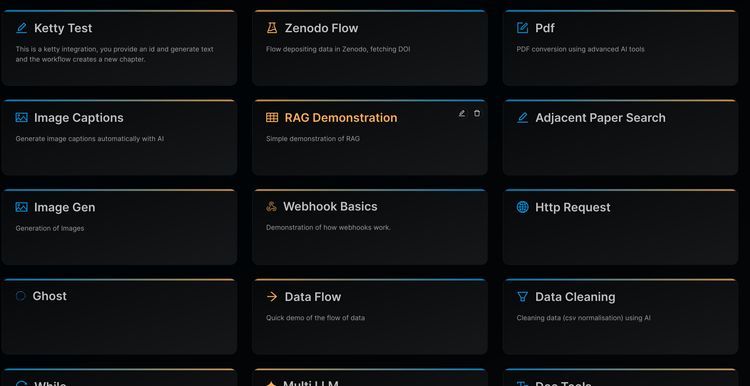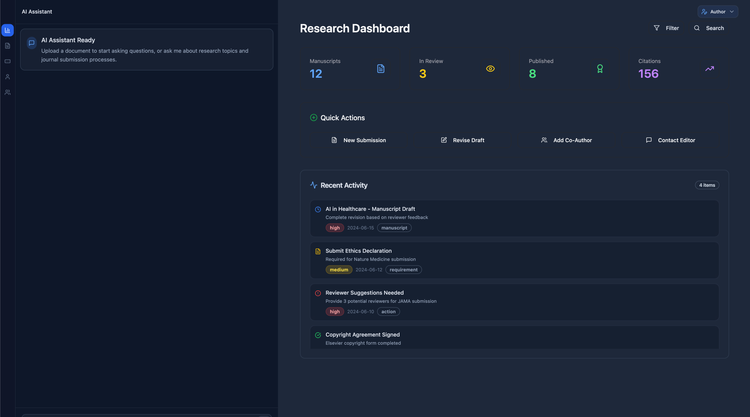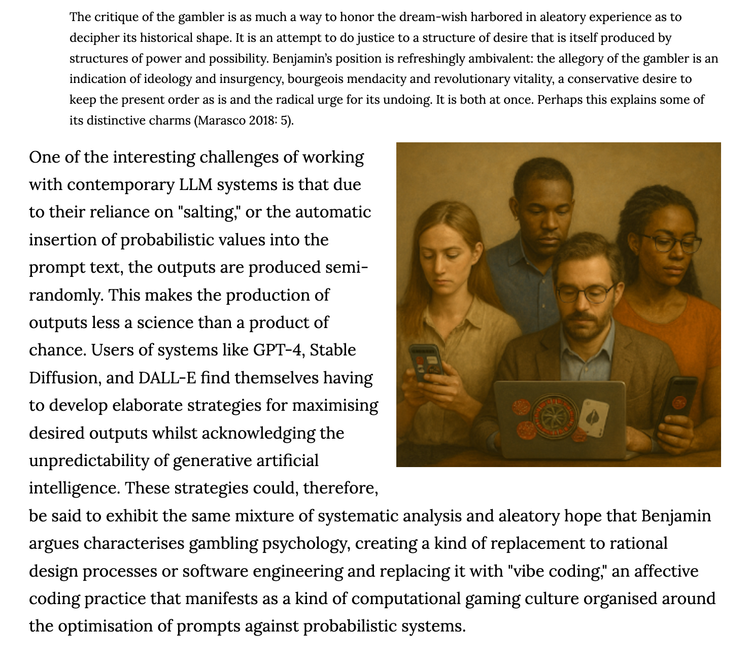Is Email an Important AI UI for Publishing?

Email has been around for so long and is so ubiquitous it passes one qualification metric of infrastructure - we rely on it for so much it has become invisible. It might be time however to 'see it again' and contemplate how it might have a new relevance.
The rise of AI signals a transformative period where natural language interfaces are reshaping our interactions with digital technologies. Email is a natural language interface. We generally use it for human-to-human communication but it is also used a lot for machine-to-human communications (systems notifications etc). However it has not been used a lot for human-to-machine communications due to the fact that email is a transporter of free form text. Free form text, even when we try and make it conform to strict format protocols, has always been difficult for machines to understand.
However, 'understanding free form text' is exactly what AI does. The potential of AI in redefining email interactions primarily hinges on its newfound capability to understand and respond to natural language. This marks a significant shift from the traditional limitations of machine interactions with emails.
Utilising email as an interface for AI opens up some very interesting possibilities. AI can, for example, automatically categorize incoming emails based on content, highlight priorities based on urgency or relevance to specific tasks, or even extract and summarize key information. Or AI could go further and facilitate our work by integrating with systems to enable 'machine events' such as updating the state or status of a object in a workflow platform, initiating the next stage of a process, automatically validating any documents that are attached to the email etc.
The ability of AI to understand and interpret natural language could turn out to be a game-changer for workflows that rely on email communications. It transforms email from a simple communication tool into an intelligent system capable of automating and optimizing complex workflows. This could be particularly valuable in sectors like publishing where email is a crucial component of the operational process.
In the publishing industry, email has been the primary tool of communication, connecting various stakeholders like production staff, academic boards, authors, editorial teams, and external vendors. In my many discussions with publishing services organizations, for example, the entire workflow (interfacing with many publishers), revolves around managing email communications, primarily because :
- With the lack of a harmonious, integrated, technical environment email becomes a defacto B2B API
- Many tasks within publishing require 'high touch' human facilitation, mostly conducted remotely via email
Email as defacto B2B 'API'
The technical ecosystem in the publishing sector is notably fragmented and lacks uniformity. This poses a significant challenge for service providers who need to engage with multiple clients. Although these clients may share similar needs, the absence of a standardized systems level integrations or uniformity for easy data exchange necessitates manual interaction, often through email.
This lack of unification in systems means service providers must adapt to each client's unique technical environment, leading to increased time and effort spent on manual communication and coordination.
Email becomes the common denominator in these scenarios, serving as the primary mode of communication.
However, the reliance on email for coordination and data exchange is inefficient and time-consuming, particularly when dealing with a high volume of clients or complex tasks. The manual nature of these interactions can also lead to errors and inconsistencies.
The need for a more unified technical ecosystem is evident. Such unification would streamline processes, reduce the reliance on manual, email-based interactions, and facilitate smoother and more efficient service delivery. However, achieving this level of standardization across diverse technical ecosystems is a significant challenge, requiring collaboration and agreement on common standards and practices among various stakeholders in the industry. Therefore email becomes, and may remain for sometime, a kind of defacto B2B 'API'. In fact, in time, email might become more important to these workflows if AI is leveraged to automate assistive machine processes.
Publishing as high touch industry
In the publishing industry, the role of human facilitation is immensely valuable, reflecting the 'high touch' nature of the sector. Publishing services, often perceived as operating at the lower end of the hierarchy, actually provide a crucial service by adeptly navigating the complex 'emotional landscape' of the academic world. This involves understanding and managing the nuanced and sometimes sensitive dynamics between various stakeholders, such as authors, reviewers, and publishers.
The high value of these publishing services lies in their ability to skillfully handle the interpersonal and emotional aspects of academic interactions. This includes managing expectations, addressing concerns, and facilitating communication in a way that respects the often nuanced (and sometimes emotionally charged) interpersonal nature of academic work. In this context, these services are not just administrative or procedural; they play a critical role in maintaining a harmonious and productive environment.
A significant part of this navigation and facilitation is conducted through email. Email serves as the primary communication channel, allowing for detailed and highly curated exchanges that are essential in handling the interpersonal aspects of the academic publishing process. The reliance on email for these interactions is due in part to its universal accessibility and its suitability for conveying complex, sensitive information in a thoughtful and considered manner.
Email plays an important role in publishing (and many other sectors of course) beyond just a tool for information exchange; it becomes a medium for building and maintaining relationships, understanding and addressing concerns, and managing the delicate balance of various interests and emotions involved in the academic publishing process. In essence, the ability to effectively manage these email communications is a vital skill, adding significant value to the offerings of (for example) publishing services within the academic sector.
Email and AI
With all this in mind, the current landscape of publishing looks, for many publishers, to be tied to email. It can, of course, be argued that this state of affairs is a net negative. I have written on this blog a lot about how synchronous communications brings concurrency which, in turn, leads to accelerated workflows in publishing. Email is a good asynchronous communication tool and not well suited for highly engaged synchronous or concurrent collaboration (chat, for example, is better suited to this). However, the move to integrated working platforms that embrace synchronous protocols like this across the entire sector is going to be, at best, slow-ish.
Given AI's ability to understand and interpret free-form text, email could serve as a conduit for more efficient and automated workflow processes. The great irony of all time might be that the publishing industry, well known for being reticent in adopting new systems (except in the 'great migration' from paper to digital), may be on the cutting edge of AI interfaces given the heavy reliance on email.
We can easily imagine a scenario where AI systems are part of the email loop in publishing workflows. Adding AI to the loop could optimize rather than overhaul existing processes. Intelligent agents could interpret exchanges between stakeholders, then perform helpful actions like:
- Updating manuscript statuses in tracking systems
- Running quality checks on document attachments
- Triggering workflow events like reviewer invitations
- Automated metadata extraction from attached manuscripts (many publishing service providers still manage this via email attachments)
- Text analysis to propose relevant reviewers for a submission
- Text generation to draft routine admin emails for proofing
- Transcribing key discussion points from email threads
- Providing author guides for next procedural steps
- Triggering various workflow events (executed by humans or machines)
Such functionality would ease publishing's manual efforts and data silos without necessitating adoption of entirely new platforms.
In essence, AI has potential to elevate email from mere messages to an intelligent interface for automating workflows - no longer 'just' human-human messaging, but helpful human-machine collaboration. It presents publishing an opportunity for low-friction productivity enhancement rooted in existing email habits.
Ultimately, the scholarly publishing sector should progress beyond reliance on disjointed legacy systems that currently bottleneck more streamlined technical workflows. It is overdue for publishers to modernize platforms in line with how other industries have benefited from technology advancements over the last decades. However AI integrations with email might have the ability to improve the current situation quite significantly.
Email as a universal machine API
As an aside, it is also interesting to consider a future where the reliance on complex APIs for system-to-system communication is rendered obsolete. In this scenario, full-text messages could serve as the primary means of interaction, with email evolving to become the interface itself. Email could become the dominant protocol for systems integrations across technical infrastructures. Email as a universal machine API. This could significantly simplify the way systems exchange information, bypassing the intricacies and technicalities associated with API development and maintenance.... but that's a subject for another post.

Coda
Ultimately, the scholarly publishing sector should progress beyond reliance on disjointed legacy systems that currently bottleneck more streamlined technical workflows. It is overdue for publishers to modernize platforms in line with how other industries have benefited from technology advancements over the last decades.
However, meaningful transformation at scale will inevitably take sustained effort and sector-wide collaboration. In the interim before sweeping changes fully materialize, refreshing perceptions around email's role could pragmatically enhance day-to-day functions for incumbent tools.
Rather than perpetuate assumptions of email as a human-2-human only medium, integrating intelligent assistance into existing inboxes represents attainable productivity gains with minimal disruption. As larger modernization efforts slowly coalesce, AI can optimize messaging environments publishers already inhabit.
I still advocate for pushing the scholarly publishing ecosystem towards more unified, contemporary platforms over the long run. But breathing some overdue dynamism into prevailing email habits is a reasonable transitional step. It extracts untapped utility from current environments while setting the stage for more ambitious upgrades down the line as capacity and appetite build. Sometimes it pays to improve the now even while aspiring for better futures.
© Adam Hyde, 2024, CC-BY-SA
Image public domain, created by MidJourney from prompts by Adam.






Member discussion